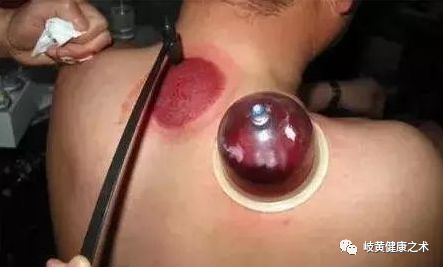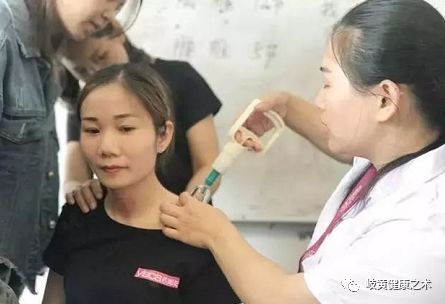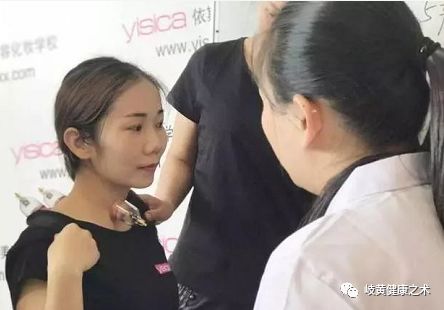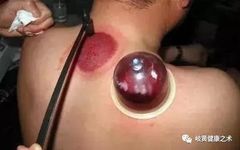Bloodletting therapy, known as cì luò fàng xuè liáo fǎ (刺络放血疗法), is a unique acupuncture treatment method in Traditional Chinese Medicine (TCM). It is one of the most commonly used therapeutic methods since the era of the Nei Jing (《内经》), which even considers bloodletting as the first choice for treating diseases and alleviating pain. Depending on the patient’s specific condition, a three-edged needle or a thick, sharp needle is used to puncture certain acupuncture points or superficial blood vessels on the patient’s body to release a suitable amount of blood, achieving therapeutic effects.
The effects of bloodletting therapy:
It has a good bidirectional regulatory effect on the blood system.
Research shows that bloodletting therapy can promote human metabolism, stimulate bone marrow hematopoietic function, accelerate metabolism, improve microcirculation and vascular function, facilitate the elimination of harmful substances from the blood, and ensure beneficial substances are timely replenished into the bloodstream, helping the body re-establish homeostasis and restore normal physiological functions. By improving microcirculation, it can also prevent excessive inflammatory responses and promote recovery from inflammation.

Scientific research proves
Wherever there is strain or obstruction in the meridians, there is varying degrees of residual stasis and toxins. Only by thoroughly expelling the residual stasis can the root cause of the strain be fundamentally resolved, and the best way to achieve this is through bloodletting therapy.

Benefits of Bloodletting and Cupping Therapy
1. Pain Relief
The most prominent therapeutic effect of bloodletting and cupping therapy is pain relief. Conditions such as neuralgia, joint pain, sciatica, cervical and lumbar pain, gout, renal colic, severe pain from phlebitis, and appendicitis abdominal pain can all see significant reduction or disappearance of pain after bloodletting. TCM believes that “pain indicates obstruction”; when the flow of qi and blood is abnormal, it leads to qi stagnation and blood stasis, causing obstruction in the meridians, resulting in pain. Bloodletting can clear the obstructed qi and blood in the meridians, altering the pathological changes of qi stagnation and blood stasis, thus relieving pain.
2. Heat Dispelling
Cupping and bloodletting can reduce fever. Ancient medical texts record “heat dispelling through bloodletting.” There are many causes of fever; generally, bloodletting and cupping therapy are more effective for exogenous fever and yang excess fever. After bloodletting and cupping, it can promote the expulsion of pathogenic heat or reduce the heat in the blood, balancing yin and yang in the body and reducing fever. The Nei Jing has a chapter dedicated to the treatment of febrile diseases, stating: “In cases of lung heat disease, there is a feeling of heaviness, hair standing on end, aversion to wind and cold, a yellow tongue, and body heat. When heat is excessive, it leads to coughing and chest pain, making it difficult to breathe, and severe headaches, with sweating and chills… Bloodletting at the Tai Yin (太阴) and Yang Ming (阳明) points, with blood flowing like soybeans, will immediately alleviate the condition.” This vividly describes the symptoms caused by external pathogens and the significant effects of bloodletting in reducing heat and eliminating disease.

3. Sedation
Bloodletting and cupping therapy have a calming and tranquilizing effect. Clinical observations have shown certain effectiveness in treating manic-type schizophrenia, insomnia, hysteria, tetanus, and epilepsy. This effect may be achieved by regulating blood and qi, facilitating the flow of qi and blood in the organs, and restoring normal physiological functions.
4. Swelling Reduction
Localized swelling and pain in limbs caused by trauma, leading to restricted movement, are often due to qi stagnation and blood stasis, and obstruction in the meridians. Bloodletting and cupping can clear the obstructed qi and blood in the meridians, thus alleviating swelling and pain. Clinical observations indicate that bloodletting therapy is effective for both new and old injuries.
5. Emergency Resuscitation
The emergency effects of bloodletting and cupping have been highly valued by ancient physicians and are widely known in folk medicine. For acute conditions such as heat stroke, convulsions, shivering, coma, high blood pressure, and snake bites, bloodletting therapy can often immediately relieve the critical situation.
6. Detoxification
Bloodletting and cupping therapy have detoxifying and anti-inflammatory effects. For some infectious diseases such as acute mastitis, acute appendicitis, erysipelas, furuncles, and conjunctivitis, bloodletting therapy can promote the resolution of inflammation. For localized infections like furuncles and erysipelas, bloodletting can be performed directly at the swollen area to expel toxins with the blood. In cases of snake bites, immediate bloodletting at the bite site can help expel venom and alleviate poisoning symptoms.

7. Dissolving Stasis and Symptoms
Bloodletting and cupping therapy are effective in invigorating blood circulation, dissolving stasis, and alleviating symptoms associated with blood stasis and accumulation.
8. Other Benefits
In addition to the main benefits mentioned above, clinical observations from the Shen San Needle Acupuncture Bloodletting Research Institute have also noted effects such as cardiotonic, diuretic, antiemetic, and antipruritic actions.
The foundation of life is metabolism, which relies on a sound blood circulation system. TCM believes that qi and blood flow through the meridians, nourishing the entire body, and all bodily functions depend on the normal operation of qi and blood. “Blood and qi are the spirit of a person” (《素问◎八正神明论篇》), where the spirit represents the totality of life activities, and qi and blood are the driving force and source of life activities. When qi and blood are abundant and flowing normally, one feels energetic, has strong resistance to diseases, and life activities proceed normally, hence the saying “those who possess spirit will thrive.” Conversely, if the righteous qi is deficient and external pathogens invade, it leads to disturbances in the body’s qi mechanism, qi and blood stagnation, and dysfunction of the organs, resulting in disease. Therefore, it is said that “all diseases arise from qi and blood stagnation and obstruction” (《千金方》), and “when blood and qi are not harmonious, various diseases will manifest” (《素问◎调经论篇》).

Bloodletting Techniques and Timing
Bloodletting Technique:
1. After identifying the acupuncture point, quickly puncture the wrist with 6 to 9 pricks.
2. For dilated blood vessels, one needle prick should suffice, and blood will generally spurt out; be prepared for this, and avoid shallow blood.

Reactions After Bloodletting:
1. 80% of patients feel relaxed and comfortable after bloodletting, while 20% may experience increased pain. Those who feel increased pain tend to heal much faster than those who feel immediate relief.
2. If there is no sensation after 5 to 10 bloodletting sessions, further bloodletting is not advisable.
Timing for Bloodletting
1. For inflammation and acute pain patients, bloodletting can be done once a day, and after alleviating symptoms, once every 3 to 5 days.
2. For chronic patients, once every other day, and after seeing results, once every 5 to 7 days. Bloodletting can be performed at the cupping site followed by cupping for 15 to 20 minutes.

Precautions for Bloodletting and Cupping Therapy
1. Patients with bleeding disorders such as thrombocytopenia, hemophilia, or those who faint at the sight of blood, as well as patients with vascular tumors, are generally prohibited from using this therapy.
2. Anemia, low blood pressure, pregnancy, excessive hunger or fullness, intoxication, and extreme fatigue are not suitable for this therapy.
3. Proper explanations should be provided to patients to alleviate unnecessary concerns.
4. Bloodletting instruments must be strictly sterilized to prevent infection.
5. During bloodletting, care should be taken not to insert the needle too deeply, and the wound should not be too large to avoid damaging other tissues. When cutting blood vessels, it should be a simple incision, not a complete severing of the vessel.
6. Bloodletting should not be excessive, and should be controlled within standard limits. If bleeding does not stop easily, pressure should be applied to stop the bleeding.
7. If this therapy is only for symptomatic emergency use, a comprehensive examination should be conducted after the condition alleviates before further treatment. Bloodletting therapy should not be misused.

Understanding Your Health Status Through Blood Sample Color – Which Type Are You?
1. Dark black blood, resembling ink, indicates a long-standing illness, suggesting stasis has been present for a long time, obstructing the blood vessels.
2. Blood mixed with water indicates rheumatic disease or liver disease.
3. Blood containing jelly-like mucus indicates dampness and toxins accumulating and stagnating for a long time;
4. Very light blood indicates inflammation or an early-stage illness. Purple-red blood indicates a new injury;
5. If the extracted substance resembles wash water, it indicates severe chronic dampness;
6. Transparent liquid indicates edema;
7. The presence of blisters indicates heavy dampness;
8. Foamy liquid suggests wind pathogen;
9. A large volume of blood indicates a long disease course;
10. A small volume of blood indicates a short disease course or a deeper location;
11. When removing the cupping jar, if you feel a rush of hot air, it indicates heavy damp-heat;
12. Slow bleeding, even after multiple pricks, suggests qi deficiency and blood deficiency;
13. Blood that is light and difficult to coagulate indicates blood deficiency;
14. Blood that settles quickly and coagulates indicates qi deficiency.
Long press the QR code to follow Personal WeChat Learning from classical texts like the Nei JingRooted in the fundamentals of TCM
Learning from classical texts like the Nei JingRooted in the fundamentals of TCM
Inheriting the classical TCM wisdom
Teacher He WeChat
18339928983

